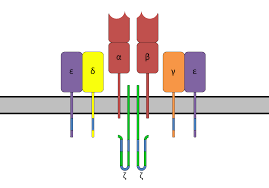Blog Post
Understanding CD3: A Key Player in Immune Response
The immune system is a complex network of cells and molecules working together to protect the body from infections and diseases. Among the crucial components of this system are the Cluster of Differentiation (CD) markers, which are proteins found on the surface of immune cells. These markers play essential roles in cell signaling, identification, and interaction. One such vital marker is CD3, which is instrumental in the activation and regulation of T cells.
What is CD3?
CD3 is a protein complex found on the surface of T cells, a type of white blood cell that is central to the immune response. The CD3 complex is composed of several subunits: CD3γ, CD3δ, CD3ε, and CD3ζ. These subunits work together to form a receptor complex that is crucial for T cell activation.
The primary function of CD3 is to transmit signals from the T cell receptor (TCR) to the inside of the T cell. When the TCR recognizes and binds to an antigen (a molecule that triggers an immune response), CD3 helps initiate a cascade of intracellular events that activate the T cell. This activation process is essential for the T cell to perform its functions, including attacking infected or cancerous cells and coordinating the immune response.
The Structure of CD3
The CD3 complex is tightly associated with the T cell receptor, which recognizes specific antigens presented by other cells. The CD3 complex is composed of the following subunits:
- CD3γ (gamma)
- CD3δ (delta)
- CD3ε (epsilon)
- CD3ζ (zeta)
These subunits span the cell membrane and extend into the cytoplasm, where they transmit activation signals to the T cell’s interior. The cytoplasmic domains of CD3 contain immunoreceptor tyrosine-based activation motifs (ITAMs), which are crucial for signal transduction. Upon antigen recognition by the TCR, these ITAMs become phosphorylated, initiating a signaling cascade that leads to T cell activation.
Function of CD3 in T Cell Activation
The activation of T cells is a multi-step process that involves the engagement of the TCR and the CD3 complex. Here’s a simplified overview of how this process works:
- Antigen Recognition: The TCR recognizes and binds to a specific antigen presented by an antigen-presenting cell (APC), such as a dendritic cell or macrophage. This binding is highly specific and is the first step in T cell activation.
- Signal Transduction: Upon antigen binding, the ITAMs on the cytoplasmic domains of CD3 become phosphorylated by protein tyrosine kinases. This phosphorylation event initiates a series of signaling cascades within the T cell.
- Activation: These signaling cascades lead to the activation of various transcription factors, such as NF-κB, AP-1, and NFAT, which enter the nucleus and promote the expression of genes involved in T cell activation, proliferation, and differentiation.
- Effector Functions: Activated T cells can then perform their effector functions, including the release of cytokines to modulate the immune response, direct killing of infected or cancerous cells, and helping other immune cells recognize and attack pathogens.
Clinical Significance of CD3
CD3 is not only crucial for normal immune function but also has significant clinical implications. The CD3 complex is often targeted in immunotherapy for conditions such as autoimmune diseases and organ transplantation. For example, monoclonal antibodies against CD3 are used to modulate the immune response in diseases like type 1 diabetes and in preventing organ transplant rejection.
Additionally, the expression of CD3 is a marker used in diagnostic immunohistochemistry to identify T cells in tissue samples. This is particularly useful in diagnosing various types of lymphomas and leukemias, where the presence or absence of CD3 can help determine the origin and nature of the malignancy.
Conclusion
CD3 is a pivotal component of the immune system, playing a crucial role in the activation and function of T cells. Its importance in immune signaling and regulation makes it a key target for therapeutic interventions and a valuable marker in clinical diagnostics. Understanding the role of CD3 enhances our comprehension of the immune system and opens up avenues for innovative treatments for immune-related disorders.


